The Curse Of Chief Chocorua Who Died On The Mountain That Bears His Name
Ellen Lloyd - AncientPages.com - Located near Conway, New Hampshire, North America, Mount Chocorua is one of the world’s most stunning mountains and a frequent target for photographers who want to capture its beauty.
Left: Mount Chocorua, John White Allen Scott (1815-1907). Credit: Public Domain - Right: Chief Chocorua commits suicide leaping off the mountain. Credit: Chocorua Lake
Mount Chocorua is named after a Native American chief who died there in the early 1700s. According to a legend, he yelled a curse and then jumped off a precipice on the eastern face of the summit. Chief Chocorua decided to end his life in a tragic way because he felt there was no other option.
First Written Mention Of Chief Chocorua
Many have wondered whether Chief Chocorua really existed and whether the vents are authentic. Those who have researched this story have found evidence that the first mention of Chocorua occurred in 1828.
Lawrence Shaw Mayo wrote in his article The History of the Legend of Chocorua that “in October 1828, a young New York artist named Thomas Cole visited the White Mountains in search for inspiration. He had already won renown as a landscape painter, especially of Hudson River scenery.
Mount Chocorua and Chocorua Lake. Credit: Kimon Berlin, Public Domain, CC BY-SA 4.0
On his way to the Crawford Notch, he lodged for a night or two in or near Tamworth and climbed Chocorua. Under the date of October 3, 1828, he wrote on one of the blank leaves of his sketchbook, which he used for keeping a diary: “We set out to climb Chocorua peak… On the path through the wood, we came to windfalls, the track of the tornado, where every tree is laid prostrate.
We came out, at length, to a lonely and deserted clearing, just at the foot of the mountain. The cause of this abandonment is, they say, the poisonous effects of water upon the cattle; the result, according to tradition, of the curse of Chocorua, an Indian, from whom the peak, upon which he was killed by the whites, takes its name.”
Why Did Chief Chocorua Curse The White Men And Commit Suicide?
According to legend, Chief Chocorua, who was a prophet lived with his young son in the region that we today know as Tamworth, New Hampshire. He wanted to avoid conflicts with the white men, and he became a good friend to Cornelius Campbell, a settler who lived in the same area with his family.
An awful tragedy ended their friendship. One day, Chief Chocorua had to leave his home and participate in a tribe meeting. He asked the Campbell family if his little son could stay with them while he was gone. They naturally agreed but Campbell's wife didn’t pay enough attention to what the youngster was doing while playing.
Chief Chocorua’s son found a bottle, opened it, and consumed its contents. The bottle contained poison that Cornelius Campbell had made to eliminate troublesome foxes. When Chief Chocorua returned, he found his son dead.
Grief and anger overwhelmed him, and he sought revenge. He went to Campbell’s property and murdered Cornelius’s wife and children. When Cornelius Campbell came home and found the dead bodies of his family, he suspected this crime had been committed by Chief Chocorua.
Chief Chocorua trapped on the summit. Credit: Chocorua Lake
Equipped with a gun Campbell, and perhaps other settlers as well chased Chief Chocorua up the mountain that today bears his name.
When the Native American Chief reached its highest peak and saw there was nowhere, he could escape, he raised his arms to the sky and shouted: “A curse upon ye, white men! May the Great Spirit curse ye when he speaks in the clouds, and his words are fire! Chocorua had a son—and ye killed him while the sky looked bright! Lightning blast your crops! Wind and fire destroy your dwellings!
The Evil Spirit breathes death upon your cattle! Your graves lie in the war-path of the Indian! Panthers howl, and wolves fatten over your bones! Chocorua goes to the Great Spirit—his curse stays with the white men!”
Then, he jumped of the mountain and died. “The prophet sunk upon the ground, still uttering inaudible curses – and they left his bones to whiten in the sun. But his curse rested on the settlement. The tomahawk and scalping knife were busy among them, the winds tore up trees ad hurled them at their dwellings, their crops were blasted, their cattle died and sickness came upon their strongest men. At last, the remnant of them departed from the fatal spot to mingle with more populous and prosperous colonies,” Lawrence Shaw Mayo wrote.
Life never became the same again for Cornelius Campbell. He became a hermit and avoided contact with everyone. Two years later, he was found dead in his house.
This is the legend that explains how beautiful Mount Chocorua got its name.
Updated on December 15, 2023
Written by Ellen Lloyd – AncientPages.com
Copyright © AncientPages.com All rights reserved. This material may not be published, broadcast, rewritten or redistributed in whole or part without the express written permission of AncientPages.com
Expand for referencesMayo, Lawrence Shaw. "The History of the Legend of Chocorua." The New England Quarterly 19, no. 3 (1946): 302-14. doi:10.2307/361968.
More From Ancient Pages
-
 Face Of Neanderthal Who Lived 56,000 Years Ago Reconstructed
Archaeology | Nov 10, 2023
Face Of Neanderthal Who Lived 56,000 Years Ago Reconstructed
Archaeology | Nov 10, 2023 -
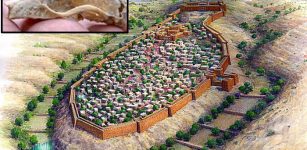 Findings From The First Temple Period Discovered In The City of David Corroborate A Biblical Event
Archaeology | May 4, 2024
Findings From The First Temple Period Discovered In The City of David Corroborate A Biblical Event
Archaeology | May 4, 2024 -
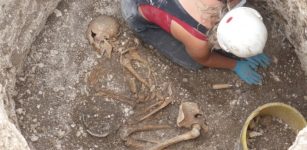 Bronze Age Human Remains Uncovered In Dorset During Excavation Of Iron Age Settlement
Archaeology | Jul 10, 2023
Bronze Age Human Remains Uncovered In Dorset During Excavation Of Iron Age Settlement
Archaeology | Jul 10, 2023 -
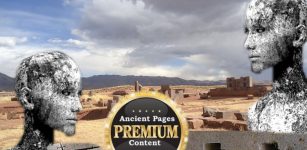 Ignored Archaeological Discovery At Puma Punku That Could Re-Write Ancient History
Ancient Mysteries | May 11, 2020
Ignored Archaeological Discovery At Puma Punku That Could Re-Write Ancient History
Ancient Mysteries | May 11, 2020 -
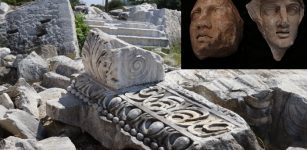 Once Impressive Temple Of Hadrian In City Of Cyzicus Will Be Restored Soon
Archaeology | Sep 7, 2020
Once Impressive Temple Of Hadrian In City Of Cyzicus Will Be Restored Soon
Archaeology | Sep 7, 2020 -
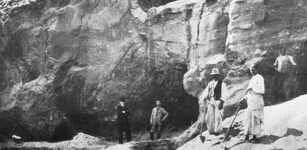 Neanderthals Decorated Their Caves With Rocks 130,000 Years Ago – Find At Krapina Site Reveals
Archaeology | Jan 19, 2017
Neanderthals Decorated Their Caves With Rocks 130,000 Years Ago – Find At Krapina Site Reveals
Archaeology | Jan 19, 2017 -
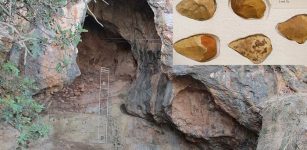 Oldest-Known Grinding Tool Used 350,000 Years Ago Was Found In Tabun Cave, Israel
Archaeology | Jan 4, 2021
Oldest-Known Grinding Tool Used 350,000 Years Ago Was Found In Tabun Cave, Israel
Archaeology | Jan 4, 2021 -
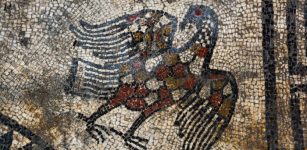 Beautiful Mosaics Reveal Ancient Secrets Of Unknown Roman City Ucetia In France
Archaeology | Apr 7, 2017
Beautiful Mosaics Reveal Ancient Secrets Of Unknown Roman City Ucetia In France
Archaeology | Apr 7, 2017 -
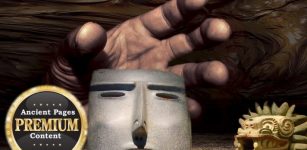 Untold Story Of Mexico’s Ancient Giant Indians – Secret Knowledge Of The Aztecs Revealed – Part 1
Ancient Mysteries | Sep 21, 2019
Untold Story Of Mexico’s Ancient Giant Indians – Secret Knowledge Of The Aztecs Revealed – Part 1
Ancient Mysteries | Sep 21, 2019 -
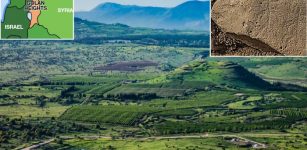 King David-Era Fort Unearthed In Golan Heights Sheds Light On Aramean Kingdom Of Geshur
Archaeology | Nov 14, 2020
King David-Era Fort Unearthed In Golan Heights Sheds Light On Aramean Kingdom Of Geshur
Archaeology | Nov 14, 2020 -
 Inscribed Fragments Of Stone Slabs Unearthed In Matariya, Ancient Heliopolis
Archaeology | Nov 9, 2018
Inscribed Fragments Of Stone Slabs Unearthed In Matariya, Ancient Heliopolis
Archaeology | Nov 9, 2018 -
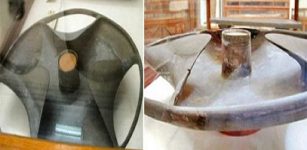 Schist Disk – Mysterious Piece Of Sophisticated Technology Could Rewrite History – Scientists Are Not Sure What They Are Dealing With
Artifacts | Jun 30, 2013
Schist Disk – Mysterious Piece Of Sophisticated Technology Could Rewrite History – Scientists Are Not Sure What They Are Dealing With
Artifacts | Jun 30, 2013 -
 Was Alulim, First King Of Sumer And Eridu Biblical Adam?
Featured Stories | Mar 14, 2019
Was Alulim, First King Of Sumer And Eridu Biblical Adam?
Featured Stories | Mar 14, 2019 -
 Unique Find In A French Crypt Offers The First Evidence Of European Familial Embalming Dating Back To The 16th Century
Archaeology | Nov 20, 2024
Unique Find In A French Crypt Offers The First Evidence Of European Familial Embalming Dating Back To The 16th Century
Archaeology | Nov 20, 2024 -
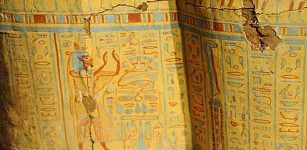 2,700-Year-Old Sarcophagus Of ‘High Priest Of God Amun’ Discovered In Luxor
Archaeology | Nov 27, 2015
2,700-Year-Old Sarcophagus Of ‘High Priest Of God Amun’ Discovered In Luxor
Archaeology | Nov 27, 2015 -
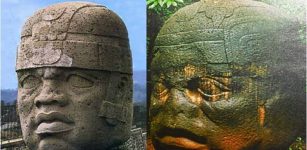 The Olmecs – Who They Were, Where They Came From Still Remains A Mystery
Civilizations | Feb 19, 2015
The Olmecs – Who They Were, Where They Came From Still Remains A Mystery
Civilizations | Feb 19, 2015 -
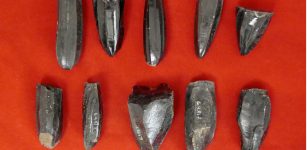 Mayas Utilized Market-Based Economics – New Study
Archaeology | Jan 6, 2023
Mayas Utilized Market-Based Economics – New Study
Archaeology | Jan 6, 2023 -
 Enigma Of The Mysterious Ancient Shining Twins – The Cosmos Connection – Part 2
Ancient Mysteries | Jun 8, 2020
Enigma Of The Mysterious Ancient Shining Twins – The Cosmos Connection – Part 2
Ancient Mysteries | Jun 8, 2020 -
 Unexplained Dangerous Secret In The Great Smoky Mountains
Featured Stories | Apr 20, 2024
Unexplained Dangerous Secret In The Great Smoky Mountains
Featured Stories | Apr 20, 2024 -
 Scientists Found Mysterious Prophecies In Ancient Egyptian Pyramid – Are They Linked To The Strange Visions Some Experience Inside?
Featured Stories | Dec 17, 2024
Scientists Found Mysterious Prophecies In Ancient Egyptian Pyramid – Are They Linked To The Strange Visions Some Experience Inside?
Featured Stories | Dec 17, 2024



